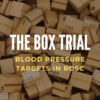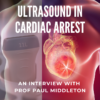Hypothermia is defined as any core temperature < 35 degrees Celsius
Today I wanted to look at a case and then discuss the controversies associated with the Management of Hypothermia.
CASE:
An 87 year old woman is brought to your emergency department. She has been found unconscious in the street by a passer by. She has an abrasion on her forehead, but no other obvious injuries. Her vitals are:
- GCS 3
- HR 62 and regular
- Temp 28 C
- RR 8
- BP 98/47
The important questions to ask are: How do we best manage her? What are the best rewarming techniques? How do you treat her if she arrests?
RAPID THEORY
Definitions
Mild Hypothermia: 32-35 C– The patient has tachycardia, ataxia, dysarthria and shivering is intact.
Moderate Hypothermia: 29-32 C– There is loss of shivering, altered mental state, muscle rigidity occurs, there is bradycardia and hypotension
Severe Hypothermia: < 29 C– The patient is usually in a coma and may have fixed and dilated pupils. The may be bradycardia, in a slow atrial fibrillation and hypotensive. Ventricular fibrillation and asystole may occur.
Complications of Hypothermia
These will include, arrhythmias, thromboembolism, renal failure and disseminated intravascular coagulation.
Investigations
Bedside: ECG, Glucose
Labs: FBC, EUC, Ca,Mg,Ph, LFT, Gluc, ETOH, CK and ABG(don’t adjust for temp)
Radiology: CXR and in our patient a minimum of head and cervical spine CT.
Approach To Resuscitation
In general, minimal handling is the rule, however it doesn’t apply to establishing intravenous access and to intubation. It certainly doesn’t apply if the patient arrests.
As the patient rewarms intravenous fluids will be needed. These should be warmed crystalloid. Beware as these patients may also be hypoglycaemic.
If the patient is in slow atrial fibrillation or other bradycardia, leave them. If in a pulseless ventricular tachycardia or ventricular fibrillation, treat them as an arrest patient.
The more unwell the patient, the more aggressive the rewarming strategies we should apply.
Basic Rewarming Strategies
Ensure the patient is dry. Use warmed IV fluids
If the patient is stable:
Forced air rewarming(bear hugger) + Humidified Air Inhalation (increase temp 2.5 C / hr)
In an arrested patient:
More aggressive techniques such as pleural lavage should be used.
How to Perform Pleural Lavage
In this method an intercostal catheter(ICC) is placed in the LEFT mid clavicular line, 3rd intercostal space. A second ICC is placed in the 6th intercostal space mid axillary line. 3 Litre bags of ISOTONIC Saline warmed at 41 C at 2L/min. The water drains via gravity through the second ICC. This method increases the temperature by 19 C/hr.
It is performed on the LEFT, so it warms the heart. Remember that to increase the temperature from 28-32 C i.e. 4 degrees Celsius, it will take between 10 and 12 minutes, this means over 20 x 3Litre bags are needed.
The alternative in the arrested patient is cardiopulmonary bypass.
CONTROVERSIES IN CARE
- Rewarming strategies will depend on the patient state:
- In patients with cardiac output, consider forced air rewarming(1)
- In the cardiac arrest, severe hypothermic patient:
- Cardiopulmonary bypass can be used (2)
- Pleural Cavity Lavage is useful (3)
- Bladder gastric and peritoneal lavage may give inadequate heat transfer.
- In patients with Ventricular Tachycardia or Ventricular Fibrillation, defibrillation should be attempted:
- We are not sure of the effect of temperature on our ability to defibrillate arrhythmias
- There is no clear evidence, and the results are confusing as some reports show arrhythmias to be refractory at low temperatures, whilst others show improved responses
- If unsuccessful withheld until the temperature is > 30 C. In the meantime continue CPR.
- The Use of Antiarrhythmics
- It has been suggested that antiarrhythmics be withheld due to a potential decrease in drug metabolism in severe hypothermia, but this is very controversial
- Animal Studies show(4)
- Vasopressors(adrenaline) increased return of spontaneous circulation(ROSC) compared with placebo
- Vasopressors increased coronary perfusion pressures compared to placebo
- Those given antiarrhythmics showed no improvement in ROSC compared to controls
- If Ventricular Fibrillation persists the American Heart Association recommend Amiodarone(5).
- There may be some place for Magnesium Sulphate, given that the hypothermic state is a Magnesium depleted state.
- Sudden Cardiac Death associated with attempted tracheal intubation is anecdotal
- Cardiac Pacing and Atropine do not work in the severely hypothermic patient
- What temperature should we rewarm to?
- Should we rewarm aggressively to 33 C and then maintain the patient at that temperature, with therapeutic hypothermia techniques as though the patient were a cardiac arrest patient?
- Is Core Temperature Afterdrop real?
- It is a further drop in core temperature following vasodilatation of peripheries driving cold blood to the ‘core’. It is very controversial and has found to be false in cases where forced air for rewarming is used.
My Simple Approach
- On presentation assess the patient with minimal handling
- Establish core Temperature
- Establish Conscious State
- Understand the situation that led to this
- Ensure no other major injuries
- Establish intravenous access
- Take all bloods as above and send a VBG pay attention to Glucose Magnesium and Potassium early
- If the patient is stable i.e.., has an output, rewarm with forced air(‘Bear Hugger’) and humidified air and warmed IV fluids
- In the patient with no output, or loses it- use normal ACLS Approach
- Defibrillate appropriate rhythms once with 200J, if no effect stop until temp > 29 C, continue CPR
- Give Adrenaline Early i.e. within first 3 minutes, 1mg intravenously
- Give one dose of intravenous Amiodarone, 300mg, for VF or VT
- Consider 10mmol/L Magnesium Sulphate if the arrhythmia is refractory- Normally makes no difference in normal cardiac arrest to ROSC, however in hypothermia, it may be different due to Magnesium depletion.
- Left Sided Pleural Lavage to raise temperature quickly
- Intubation with no drugs
REFERENCES
- Kouriberger E metal. Forced Air Surface Rewarming in patients with Severe Accidental Hypothermia. Resuscitation 1999;41:105-111
- Sheridan et al. Case Records of the Massachusetts General Hospital: Case 41-2009:a 16 year old boy with Hypothermia and Frostbite. NEJM 2009;361:2654-2662
- Athaus U et al. Management of Profound Accidental Hypothermia with Cardiorespiratory Arrest. Ann Sure 1982;195:492-495
- Wira et al. Antiarrhythmic and Vasopressor Medications for the treatment of Ventricular Fibrillation in severe Hypothermia: A Systematic Review of the Literature. Resuscitation, 2008;78:21-29
- Brown Dj et al. Accidental Hypothermia. NEJM 2012. Nov 15:367(20):1930-8











Hypothermia – Resus
adqjkzftybd
dqjkzftybd http://www.g840t8rbq16vids23j2y3s5w1lf8e187s.org/
[url=http://www.g840t8rbq16vids23j2y3s5w1lf8e187s.org/]udqjkzftybd[/url]
ブランドコピー代引き
Bamboo Charcoal Toothpaste
Led Bathroom Downlights Ip65
ブランド財布コピー
Diorディオールコピー激安
Gym Gloves For Men
Chanelシャネル財布コピー
Bulk Stone Manufacturer
Fly Fishing Hooks Bulk
ブランドコピー代引き
ブランドGucciグッチ財布コピーN級品
Azteca Taco Truck
Experts Weigh In On The Future of The Local Livestream – 303 Magazine
Diorディオール帽子スーパーコピー
スーパーコピーブランド
CNC Machining Parts Drone
Grinding Machine Price
スーパーコピーバッグ